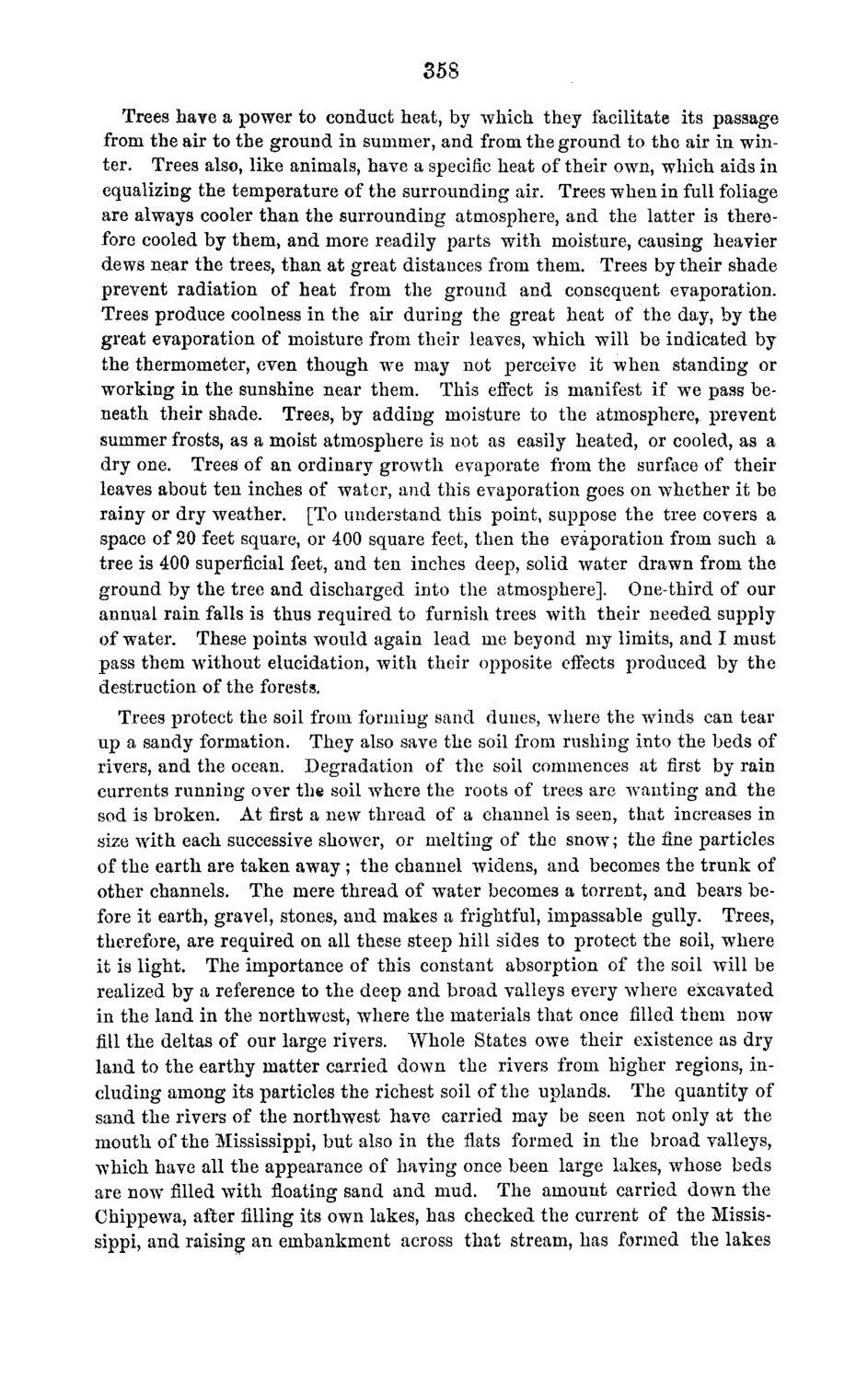| |
| |
Caption: Board of Trustees Minutes - 1870
This is a reduced-resolution page image for fast online browsing.

EXTRACTED TEXT FROM PAGE:
358 Trees hare a power to conduct heat, by which they facilitate its passage from the air to the ground in summer, and from the ground to the air in winter. Trees also, like animals, have a specific heat of their own, which aids in equalizing the temperature of the surrounding air. Trees when in full foliage are always cooler than the surrounding atmosphere, and the latter is therefore cooled by them, and more readily parts with moisture, causing heavier dews near the trees, than at great distances from them. Trees by their shade prevent radiation of heat from the ground and consequent evaporation. Trees produce coolness in the air during the great heat of the day, by the great evaporation of moisture from their leaves, which will be indicated by the thermometer, even though we may not perceive it when standing or working in the sunshine near them. This effect is manifest if wTe pass beneath their shade. Trees, by adding moisture to the atmosphere, prevent summer frosts, as a moist atmosphere is not as easily heated, or cooled, as a dry one. Trees of an ordinary growth evaporate from the surface of their leaves about ten inches of water, and this evaporation goes on whether it be rainy or dry weather. [To understand this point, suppose the tree covers a space of 20 feet square, or 400 square feet, then the evaporation from such a tree is 400 superficial feet, and ten inches deep, solid water drawn from the ground by the tree and discharged into the atmosphere]. One-third of our annual rain falls is thus required to furnish trees with their needed supply of water. These points would again lead me beyond my limits, and I must pass them without elucidation, with their opposite effects produced by the destruction of the forests. Trees protect the soil from forming sand dunes, where the winds can tear up a sandy formation. They also save the soil from rushing into the beds of rivers, and the ocean. Degradation of the soil commences at first by rain currents running over the soil where the roots of trees are wanting and the sod is broken. At first a new thread of a channel is seen, that increases in size with each successive shower, or melting of the snow; the fine particles of the earth are taken away; the channel widens, and becomes the trunk of other channels. The mere thread of water becomes a torrent, and bears before it earth, gravel, stones, and makes a frightful, impassable gully. Trees, therefore, are required on all these steep hill sides to protect the soil, where it is light. The importance of this constant absorption of the soil will be realized by a reference to the deep and broad valleys every where excavated in the land in the northwest, where the materials that once filled them now fill the deltas of our large rivers. Whole States owe their existence as dry land to the earthy matter carried down the rivers from higher regions, including among its particles the richest soil of the uplands. The quantity of sand the rivers of the northwest have carried may be seen not only at the mouth of the Mississippi, but also in the flats formed in the broad valleys, which have all the appearance of having once been large lakes, whose beds are now filled with floating sand and mud. The amount carried down the Chippewa, after filling its own lakes, has checked the current of the Mississippi, and raising an embankment across that stream, has formed the lakes
| |